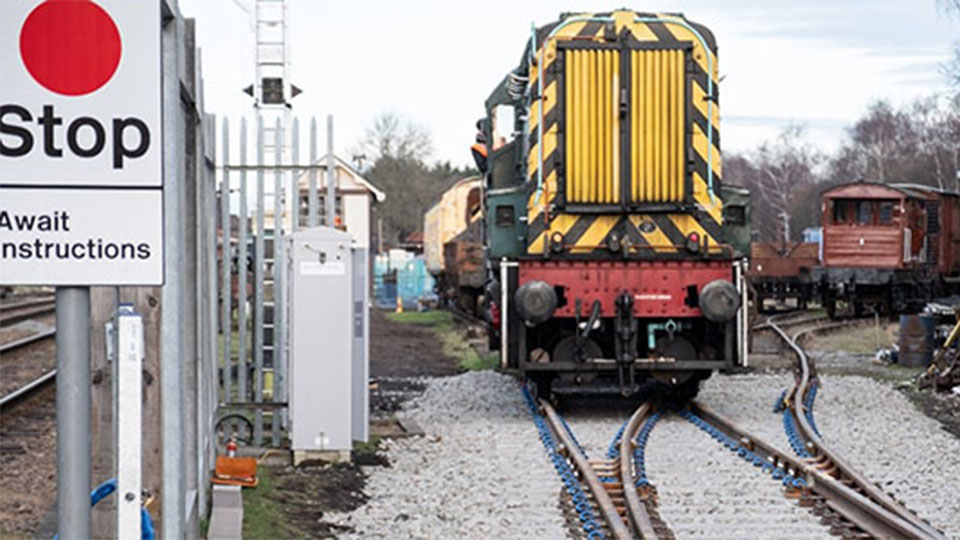REPOINT

Trains are delayed due to points failures daily, causing almost four million delay minutes per year and costing Network Rail over £120 million a year in compensation and unplanned maintenance. Introducing Repoint switches could prevent 85% and 95% of point failure-related cancellations.
Our aim
Currently, a points failure means that trains are stopped until the problem is resolved, causing huge delays on the network. The Repoint project aimed to engineer out fundamental failure modes, to facilitate improved performance; and engineer redundancy, to improve reliability.
Repoint is a system with multi-channel redundancy which will continue to operate safely, and allow trains to pass, even when there is a fault in the system. This is achieved through three actuators operating in parallel, meaning, should any one fail, the other two keep the system operational and trains running.
The Repoint track switch will benefit rail passengers by reducing the number of delays and cancellations caused by switch failures. Maintenance is also safer and can be done at convenient times, reducing risks for maintainers.
Our research
The approach was to rethink the concept of railway track switching to reduce the effect of failure through fault-tolerant design. The aerospace and nuclear industries have developed systems that can continue to operate safely even when a failure occurs. The challenge was to apply this thinking to the railway track switch so that failure no longer resulted in disruption.
Our outcomes
The work undertaken to date has been an investigation of the problem, development of a lab-scale concept demonstrator, and the development of a full-scale demonstrator at Great Central Railway (GCR), Quorn and Woodhouse Station. The trial at GCR demonstrated that the Repoint concept works as intended with rail traffic. It was successfully proven that one or even two of the three actuators can be switched off (failed), and those remaining can operate the system.